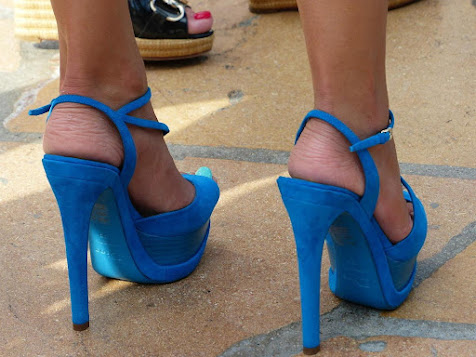Unraveling the Mystery of Haglund's Deformity: Treatment and Prevention
Introduction:
Haglund's Deformity, often referred to as "pump bump," is a bony enlargement on the back of the heel that can cause discomfort and pain. This condition commonly affects individuals who wear high-heeled shoes or tight footwear, leading to irritation and inflammation of the bursa and Achilles tendon. Understanding the causes, symptoms, and effective strategies for treating and preventing Haglund's Deformity is crucial for those seeking relief from this challenging foot ailment.
Causes and Symptoms:
Haglund's Deformity is primarily caused by repeated friction and pressure on the heel, especially when wearing poorly-fitting shoes. High heels and rigid footwear can contribute to the development of this condition, as they create constant pressure on the back of the heel. Additionally, biomechanical factors such as a high-arched foot or tight Achilles tendon can increase the risk of developing Haglund's Deformity.
Common symptoms of Haglund's Deformity include swelling, redness, and pain at the back of the heel. Patients may also experience a visible bony bump on the heel, exacerbating discomfort when wearing shoes. As the condition progresses, inflammation of the bursa and the Achilles tendon can lead to more severe pain and limited mobility.
Treatment Options:
Footwear Modification: The first step in treating Haglund's Deformity is to address the footwear that contributes to the problem. Switching to shoes with a lower heel and soft, open-back designs can help alleviate pressure on the affected area, providing relief from pain and reducing the risk of further irritation.
Orthotic Inserts: Custom orthotic inserts can be beneficial in providing additional support and redistributing pressure on the foot. These inserts help correct any biomechanical issues and reduce strain on the Achilles tendon, promoting a more natural foot alignment.
Physical Therapy: Physical therapy plays a crucial role in strengthening the muscles surrounding the heel and improving flexibility. Targeted exercises can help alleviate tension in the Achilles tendon, promoting healing and preventing further aggravation of the condition.
Ice and Anti-Inflammatory Medications: To manage pain and inflammation, applying ice to the affected area can be effective. Additionally, over-the-counter anti-inflammatory medications, under the guidance of a healthcare professional, can help control swelling and discomfort.
Prevention Strategies:
Choose Appropriate Footwear: Opt for shoes with a lower heel and a wider toe box to reduce pressure on the back of the heel. It's essential to prioritize comfort and proper fit over fashion to prevent the development or worsening of Haglund's Deformity.
Stretching and Strengthening Exercises: Incorporate regular stretching and strengthening exercises for the calf muscles and Achilles tendon. This can help maintain flexibility and prevent excessive strain on the back of the heel.
Listen to Your Body: Pay attention to any discomfort or pain in the heel, especially after wearing certain types of shoes. If you notice any signs of irritation, make adjustments to your footwear and consider consulting with a healthcare professional for guidance.
Conclusion:
Haglund's Deformity can be a challenging condition, but with the right approach to treatment and prevention, individuals can find relief and prevent further complications. By prioritizing proper footwear, incorporating therapeutic exercises, and seeking professional guidance when needed, individuals can take proactive steps towards maintaining optimal foot health and avoiding the discomfort associated with Haglund's Deformity.




Comments
Post a Comment